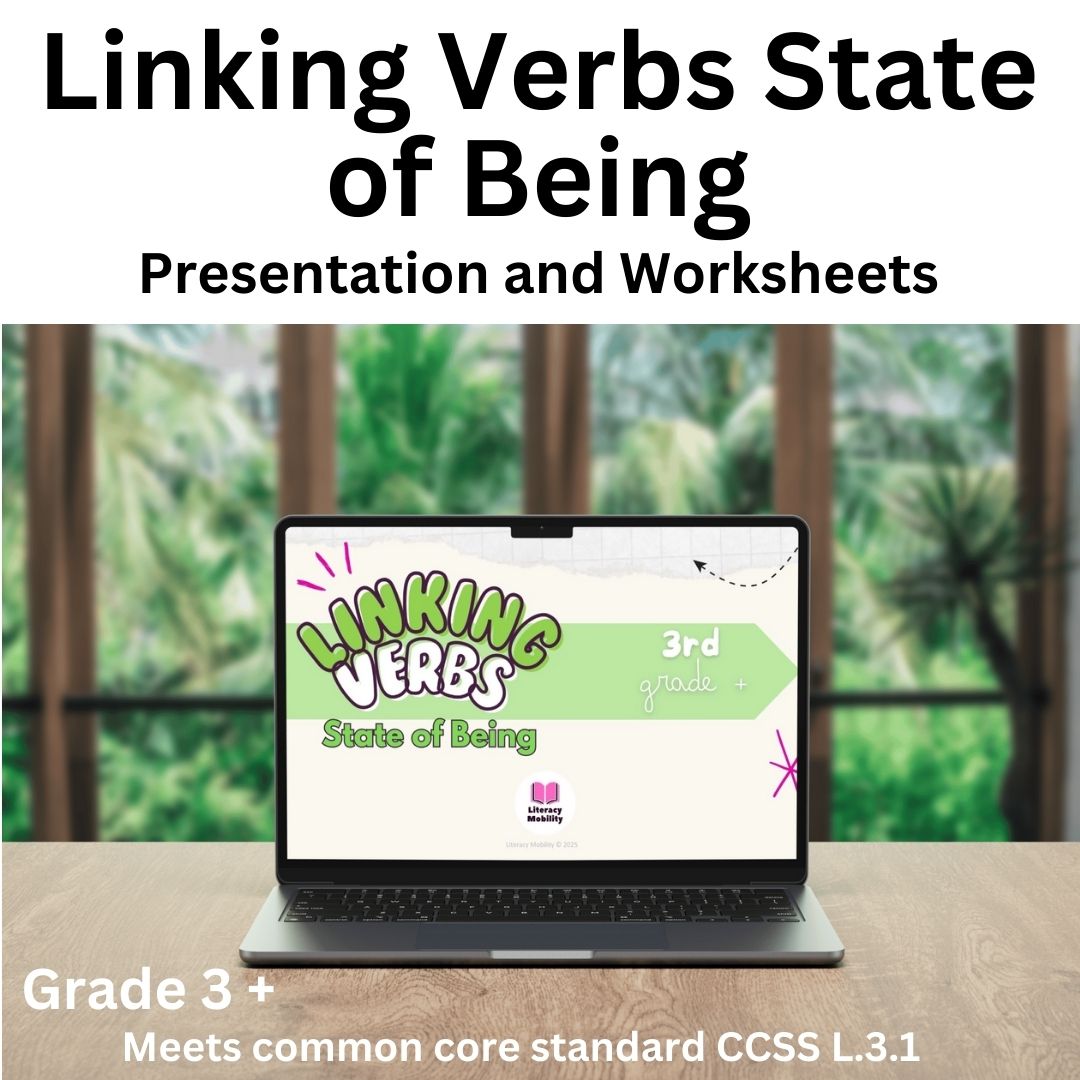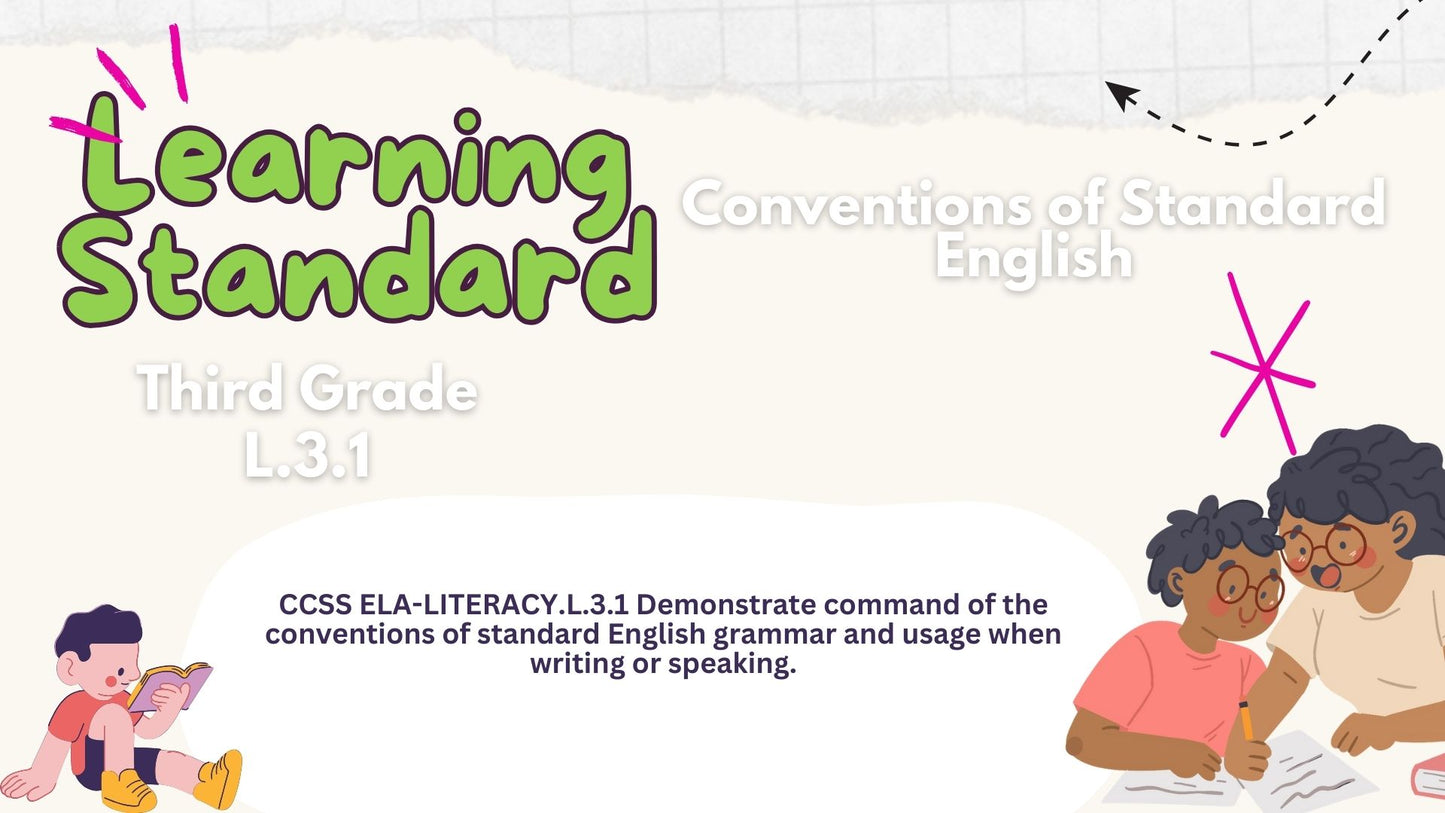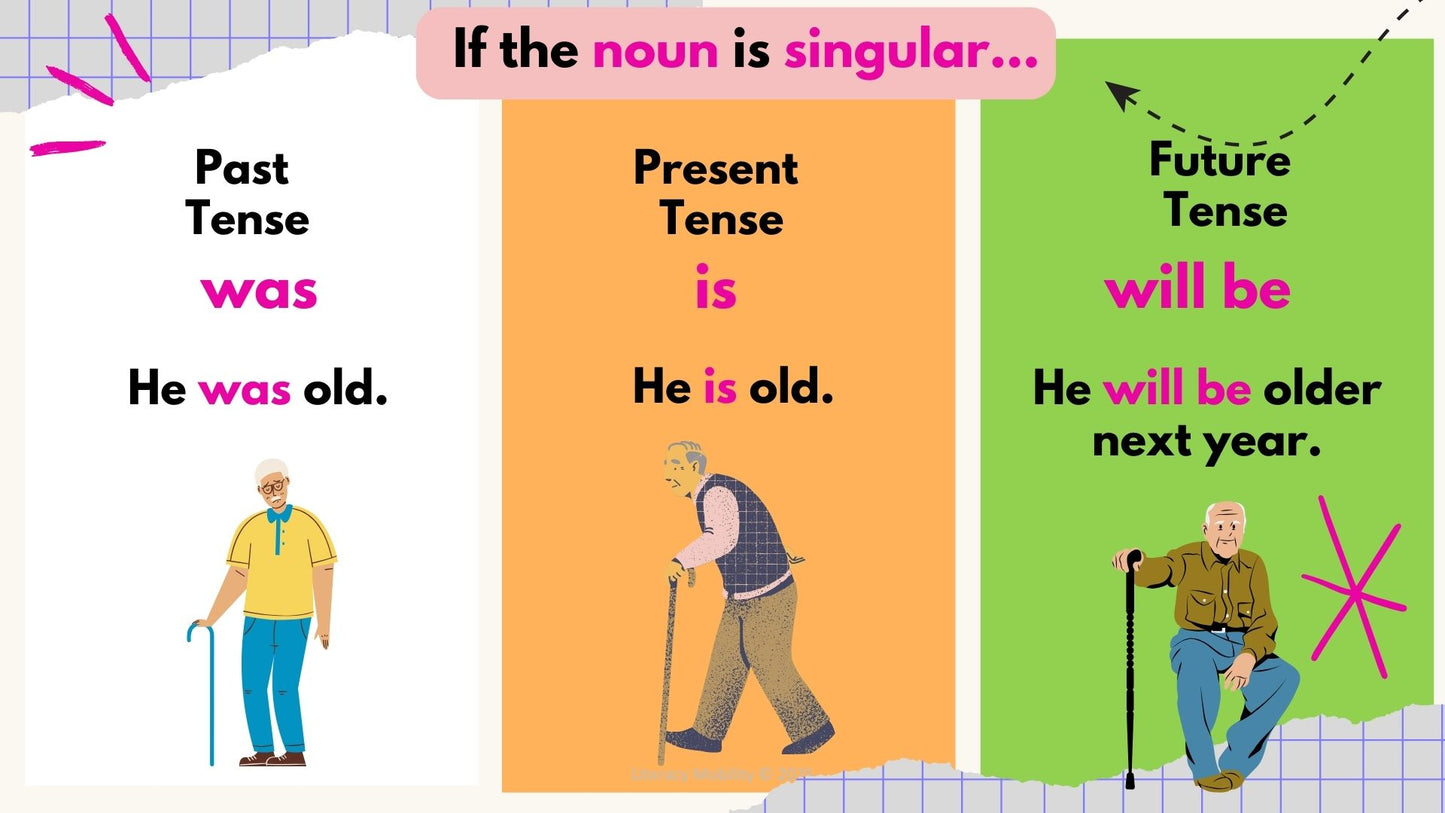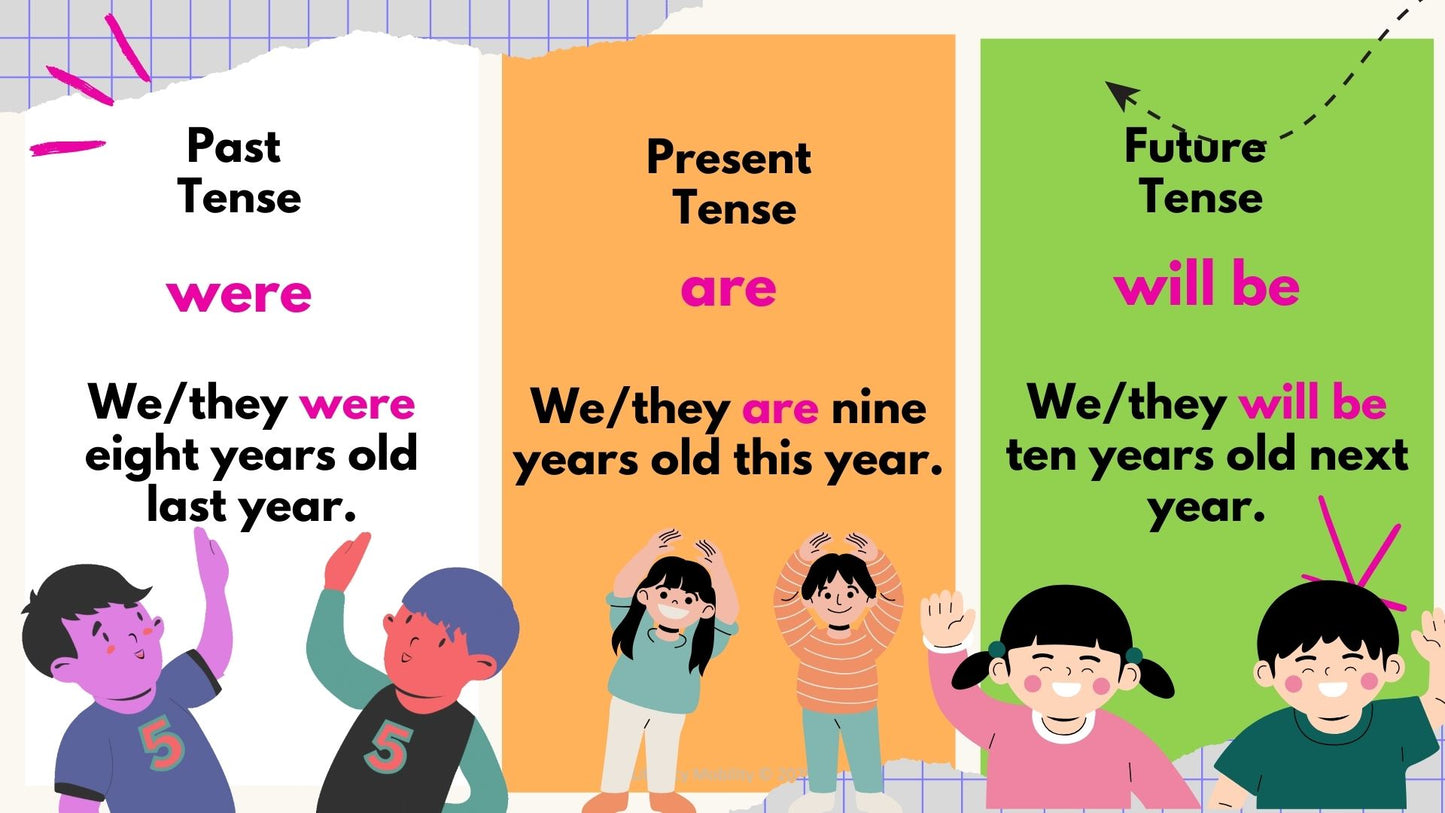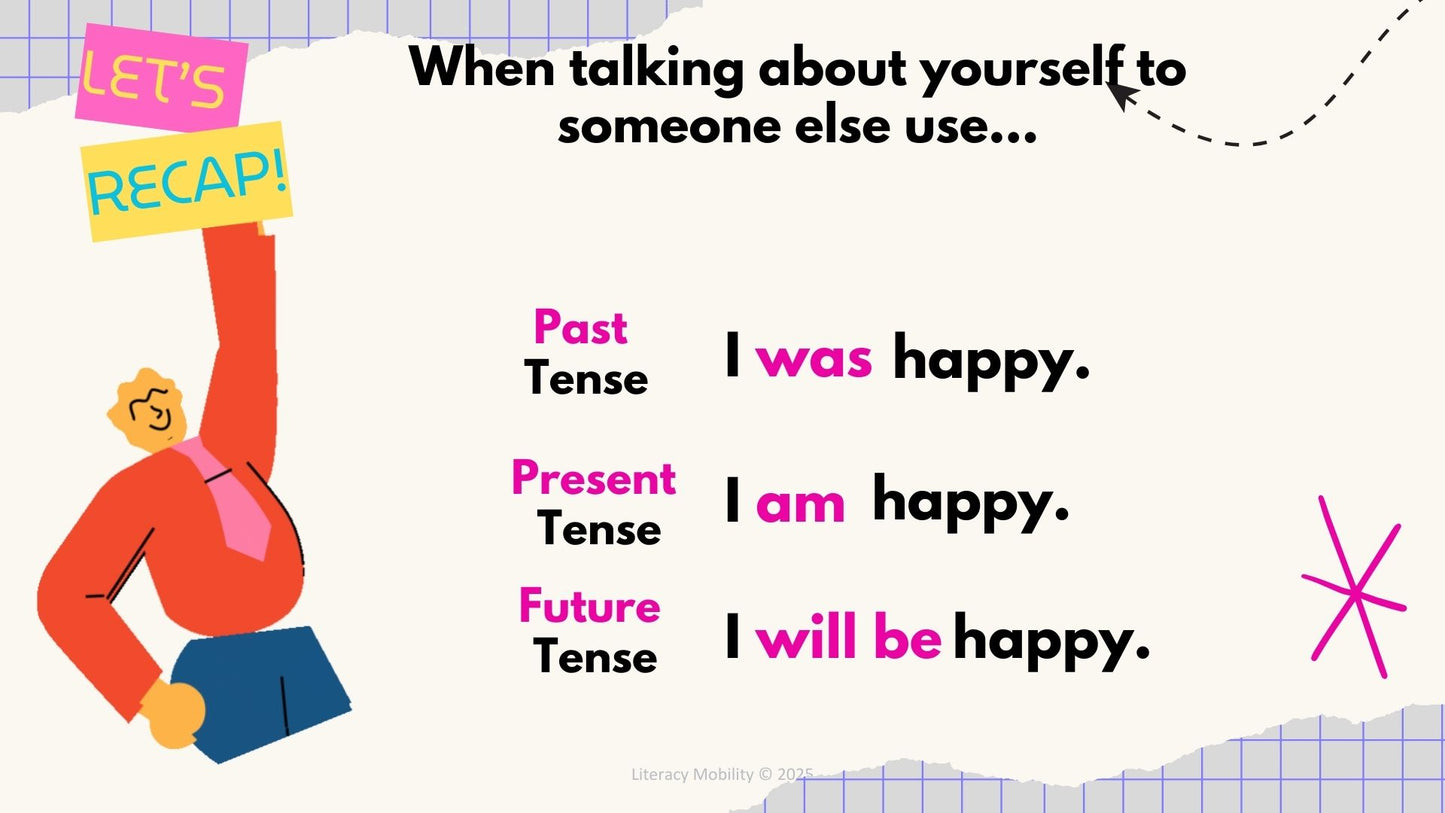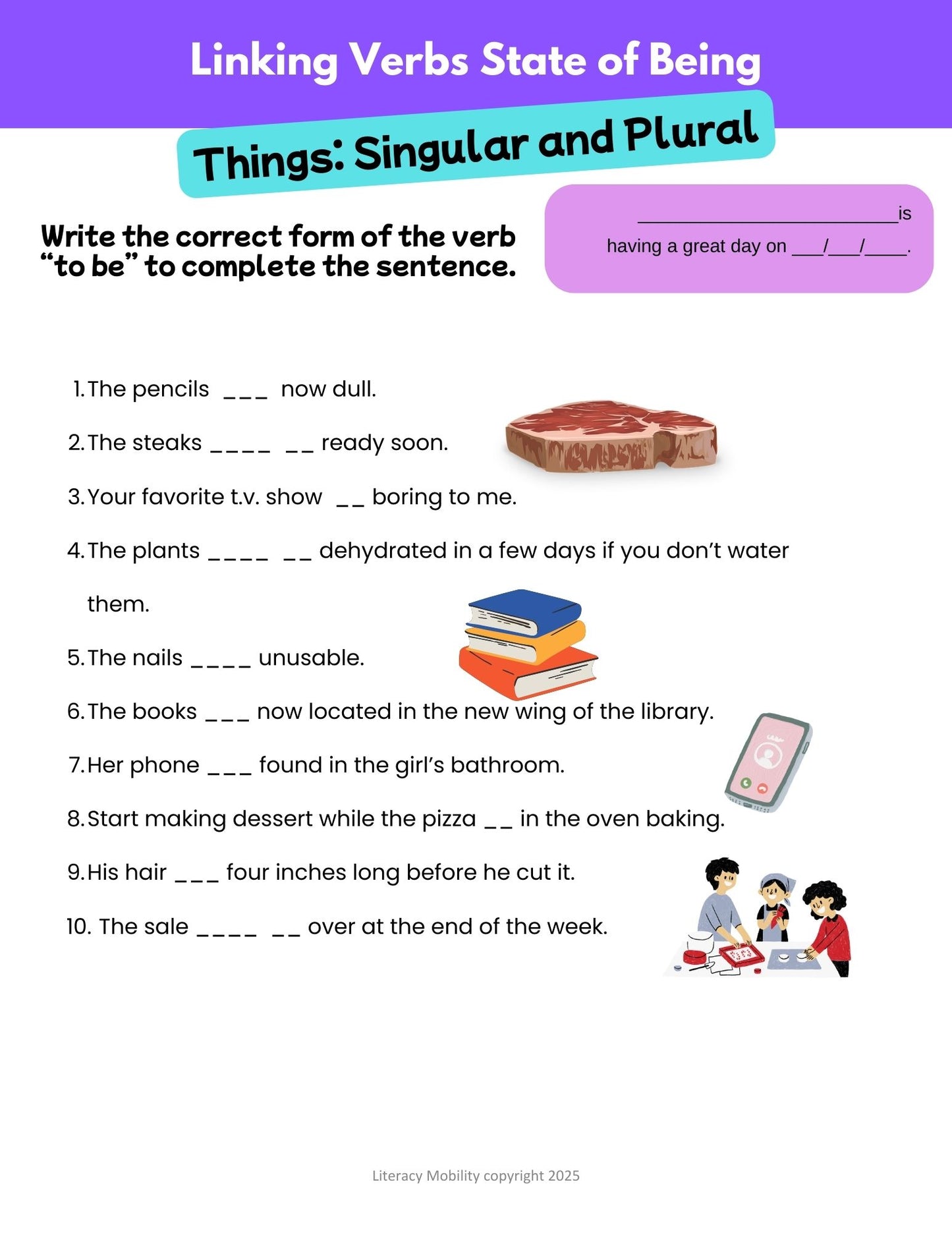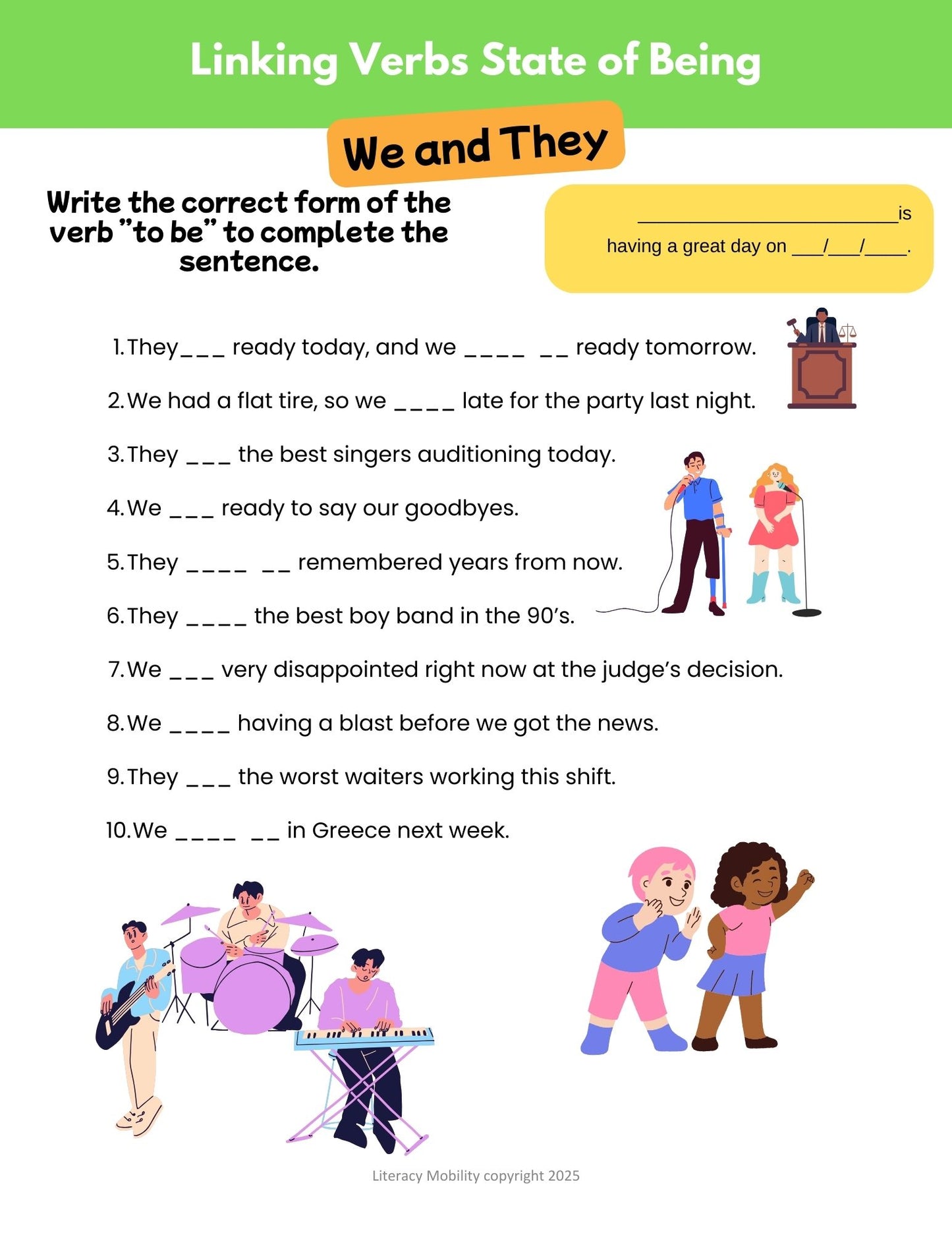Literacy Mobility
Linking Verbs State of Being PowerPoint and Worksheets | Elementary Grammar
Linking Verbs State of Being PowerPoint and Worksheets | Elementary Grammar
Couldn't load pickup availability
Teaching State of Being Verbs
Linking Verbs State of Being PowerPoint and Worksheets is a valuable digital bundle for teaching and reinforcing the concept of linking verbs and the various forms of the verb "to be" for elementary grades, aligned with CCSS ELA-Literacy.L.3.1. These materials from Literacy Mobility are designed for single-user, personal educational purposes, including classroom and event activities.
This Digital Download Bundle Includes:
Presentation on state of being verbs for elementary school
-
Linking Verbs State of Being PowerPoint Presentation: This PowerPoint presentation provides a visual and structured approach to understanding the verb "to be" as a state of being verb. The verb "to be" expresses a state of being.
-
Clear Explanations for "I": The presentation clearly explains that when talking about yourself, use "WAS" in the past tense, "AM" in the present tense, and "WILL BE" in the future tense.
-
Rules for Talking About nouns, people and things, (Singular): When talking about a singular noun, use "was" for past tense, "is" for present tense, and "will be" for future tense. For example, "The computer was old," "The computer is old," and "The computer will be older next year".
-
Rules for Talking About people and things (Plural): When talking about plural nouns, use "were" for past tense, "are" for present tense, and "will be" for future tense. For example, "The computers were old," "The computers are old," and "The computers will be older next year".
-
Rules for Talking Directly to Someone ("You"): When talking to someone about him or herself, use "WERE" in the past tense, "ARE" in the present tense, and "WILL BE" in the future tense. An example provided is "You will be well tomorrow".
-
Rules for Groups ("We" and "They"): When talking about a group of people (we or they), the presentation indicates which forms of "to be" to use.
-
Recap Sections: Each section concludes with a "LET'S RECAP!" slide summarizing the key rules for using the verb "to be" in different contexts.
Worksheets for teaching linking verbs
-
Linking Verbs State of Being Worksheets.pdf: This downloadable PDF contains multiple worksheets focused on the different forms of the verb "to be" as a linking verb expressing a state of being.
-
Practice with "I" and "You": Worksheets provide exercises where students can practice using the correct form of "to be" in sentences with the pronouns "I" and "You" in past, present, and future tenses. Answer keys are included for these sections. Examples include "I will be ready tomorrow" and "You were very pretty at the fashion show last weekend".
-
Practice with Singular and Plural Nouns ("Things"): Exercises focus on using the correct form of "to be" with singular and plural nouns. An answer sheet demonstrates examples like "The pencils are now dull" and "The steaks will be ready soon".
-
Practice with "We" and "They": Worksheets help students understand the correct usage of "to be" with the pronouns "We" and "They" in various tenses. Corresponding answers are provided, such as "They are ready today, and we will be ready tomorrow".
-
Each worksheet set includes space to write the date.
-
The worksheets are provided with teacher answer sheets.
Ideal for:
-
Teachers looking for engaging grammar lessons and practice materials.
-
Parents supporting their child's language arts education.
-
Homeschooling families.
Share
